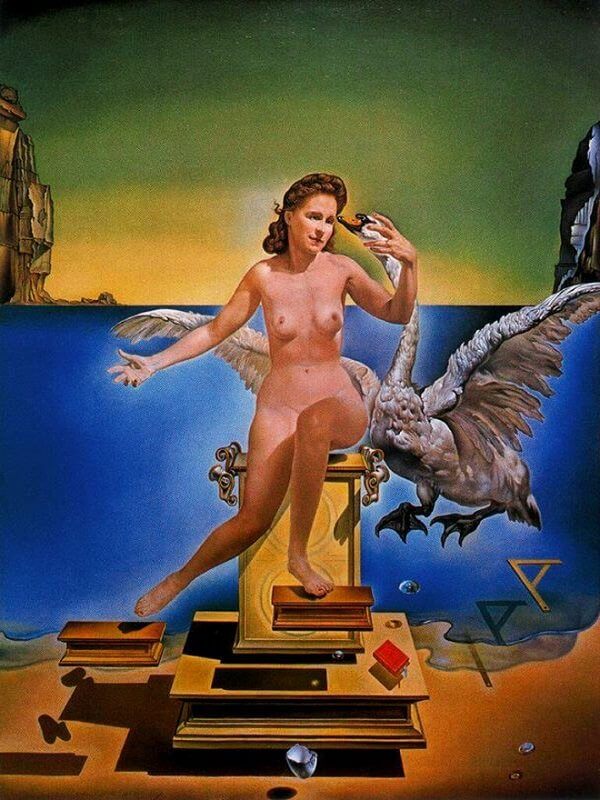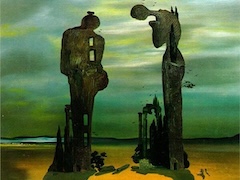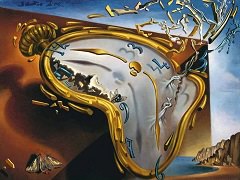Leda Atomica, 1949 by Salvador Dali

According to classical mythology, Leda was seduced by Zeus in the form of a swan, and, on the same night, made love to her husband, Tyndareus. Leda consequently bore two sets of twins: Helen (to become Helen of Troy) and Clytemnestra, and the Dioscuri-Castor and Pollux. Helen and Pollux - being the children of Zeus - were immortal, while the children of Tyndareus - Castor and Clytemnestra - were mortal. Dali identified with Leda's offspring, suggesting that he and Gala were twin souls - an especially appropriate analogy given Gala's Christian name, Helena Dimitrievna Diakonova. It is not as Helen, however, but as Leda herself that Gala appears in Leda Atomica - perhaps suggesting her role as a substitute for the artist's dead mother. Her left-hand with conspicuous wedding band sweetly caresses the head of the Zeus-swan - the lone element in the painting that fails to cast a shadow, thereby indicating its ethereality.
While Dali's 1961 Leda and the Swan, described by the artist as 'spermatic,' exaggerates the Leda myth's carnality, as captured by such artists as Michelangelo, and Peter Paul Rubens, Leda Atomica eschews concupiscence in favor of a more Apollonian subject, akin to 1508 painting, Leda and the Swan by Leonardo da Vinci.
After the atomic bomb was dropped on Hiroshima, Dali took his work in a new direction based on the principle that the modern age had to be assimilated into art if art was to be truly contemporary. Dali acknowledged the discontinuity of matter, incorporating a mysterious sense of levitation into his Leda Atomica. Just as one finds that at the atomic level particles do not physically touch, so here Dali suspends even the water above the shore - an element that would figure into many other later works. Every object in the painting is carefully painted to be motionless in space, even though nothing in the painting is connected. Leda looks as if she is trying to touch the back of the swan's head, but doesn't do it.























